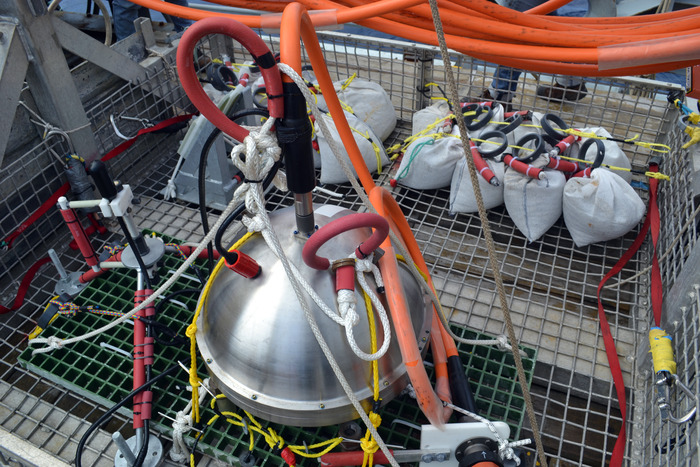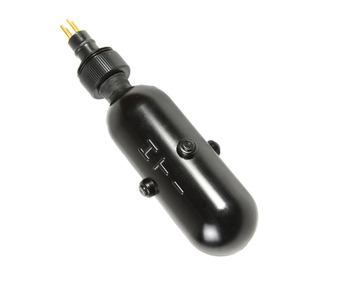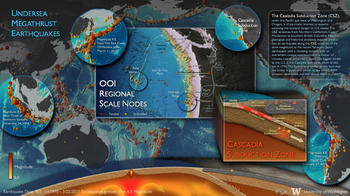Real-time detection of seismic events along the Cascadia subduction zone and Juan de Fuca Plate is a powerful capability provided by the OOI Regional Cabled Observatory. Part of this detection and monitoring capability is provided by an array of low-frequency hydrophones (2 Hz to 20 KHz) that are well suited to detect the hydroacoustic tertiary phase of T waves of oceanic earthquakes. These sensors also detect solid-earth P waves from regional and teleseismic earthquakes. Coupled with the Ocean Bottom Seismometers, the low-frequency hydrophones will increase our ability to detect offshore earthquakes in real-time, determine their magnitude, and enable better location accuracy.
During the April 24th, 2015 eruption of Axial Seamount the hydrophones "heard" what is believe to be explosions from the eruption.




